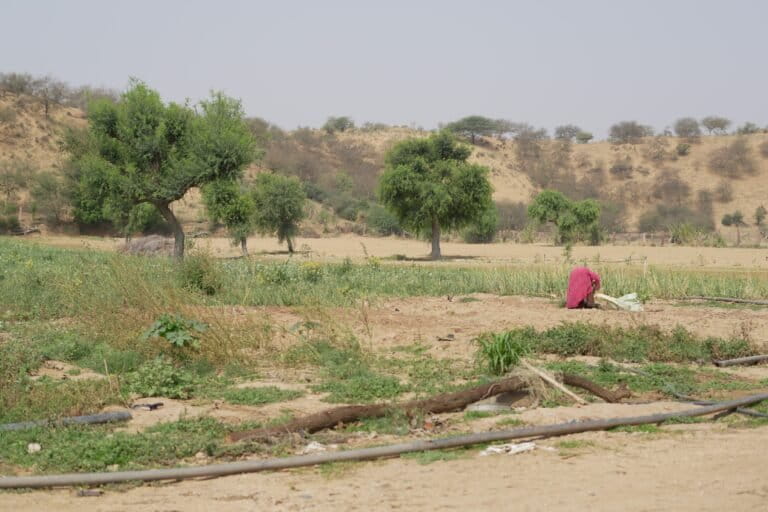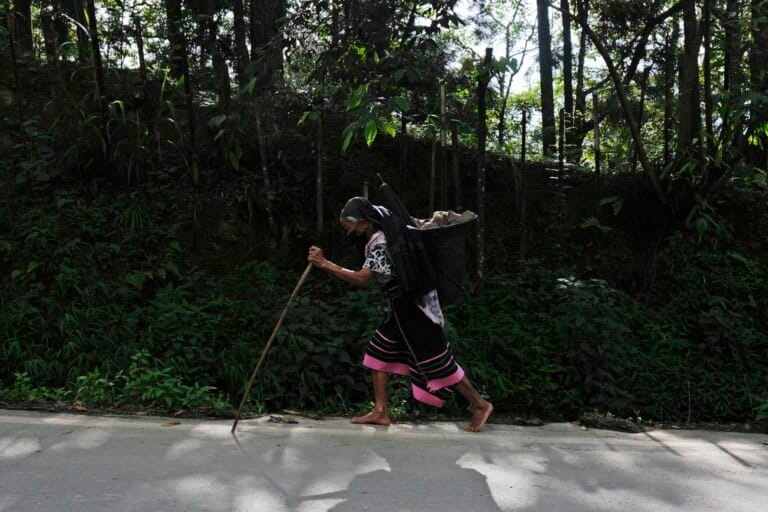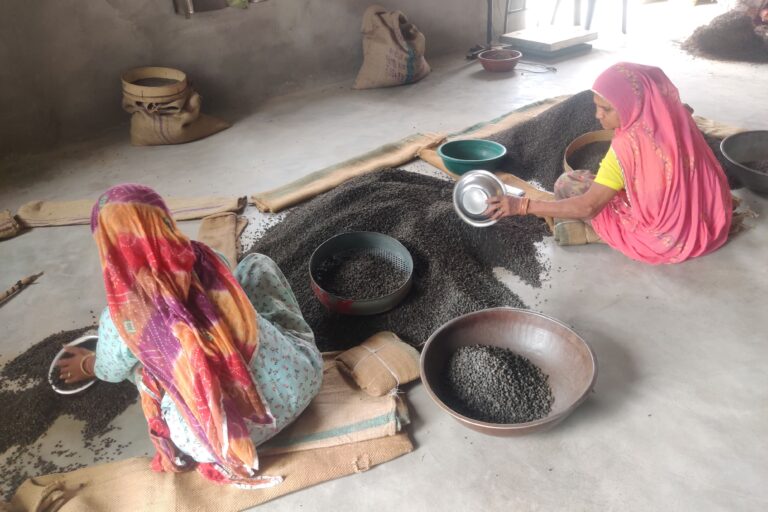- The Mumbai Coastal Forest is a citizen-led vision to transform 100 acres of reclaimed land from the city’s Coastal Road project into a climate-responsive native urban forest.
- Though the first phase of the Coastal Road opened in March 2024, the adjoining open land remains undeveloped. Over 68,000 citizens have backed the forest proposal which reimagines public land not for commercial gain, but for ecological resilience.
- The Coastal Road department has selected an expression of interest from Reliance Industries to develop the open space under a CSR initiative. Detailed plans are expected to be made public later this year which citizen groups will review to see if it aligns with their vision.
- The views in this commentary and that of the authors.
Mumbai’s relationship with the sea has taken many forms over the years, at times a boundary, for many a lifeline, and historically treated as an obstacle to be overpowered. Once a disparate conglomerate of seven islands, the city has routinely redrawn its geography. In recent memory, there was the Backbay Reclamation in the 1920s that gave the city the cherished Marine Drive. In the 2000s, the Bandra-Worli Sea Link opened to the public, standing tall in the sea on stilts. In the 2010s, the largest alteration in the city’s relationship with the waterfront was conceptualised in the form of a 29.2 kilometre coastal road along the western side of Mumbai.
Despite severe criticism from citizen groups and environmentalists, the first phase of the Coastal Road, built on reclaimed land, was opened to the public on March 11, 2024. Today, nearly 20,000 vehicles utilise the road, much lower than the anticipated 130,000. But once you turn your attention from the traffic congestion that it failed to alleviate to the land that once was the sea, a glaring issue comes to attention. What happens to the acres of land left unused? Usually, it gets appropriated into shacks of what you would consider illegal construction. Most of the time, it is usually forgotten about. Well, not this time.
Turning unused land into a forest
Amid the concrete and controversy surrounding the Mumbai Coastal Road, an alternate reality is taking shape. On the 100-acre stretch of newly reclaimed land running from Nepean Sea Road to Worli, a group of climate scientists, architects, ecologists and everyday citizens have come together with an audacious proposal: to turn the site into a native urban forest. The vision of the proposed Mumbai Coastal Forest (MCF) breaks sharply from the city’s historical development logic. Instead of extracting space from nature in an attempt to serve cars or commerce, it calls for restoring ecological processes at the heart of public space. In a city projected to see a 1.5 to 2°C rise in temperature by 2050, the Coastal Forest is proposed as a layered, living system.
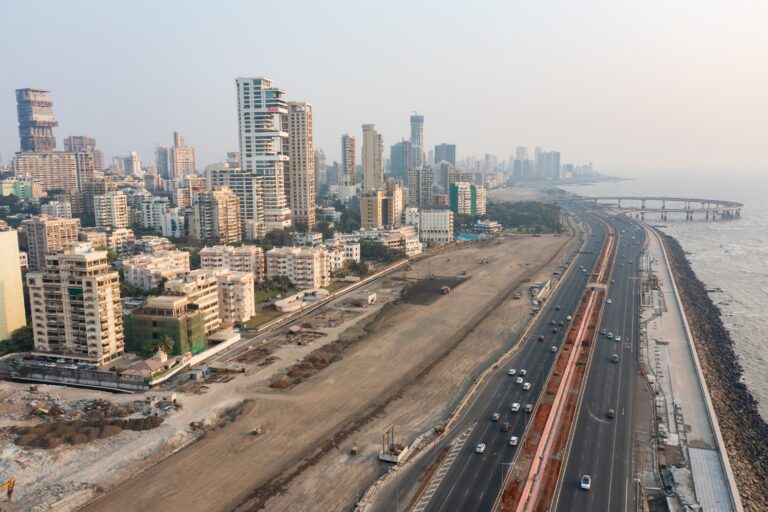
The core group includes citizens from different walks of life including climate experts, activists as well as residents with skills in finance, communications, architecture and visual design, among others, all working in partnership with authorities to create a climate-resilient future for Mumbai through ecological restoration and public stewardship.
A climate-responsive vision
The proposed native forest is not a cosmetic patch of green but visualised as a functional, climate-responsive infrastructure, woven with walkways, shaded seating and inclusive amenities. “This is public land. It deserves a public vision,” says the citizen group. “We are calling on authorities to act now and plan a forest that cools the city, cleans the air, protects against floods and gives every Mumbaikar access to nature.” But what is public land, and who owns it? The ₹12,000 crore Mumbai Coastal Road project, stretching from the Princess Street flyover to Kandivali in the northern suburbs, includes a combination of land reclamation, elevated roads, tunnels, bridges and the construction of a sea wall or breakwater in the intertidal zone. Since the project was first proposed in 2012, it has been steeped in controversy. Environmentalists and local communities have consistently raised alarms, arguing that the project bulldozes fragile marine ecosystems and threatens the homes and livelihoods of coastal fishing communities. In February 2019, the Worli Koliwada Nakhwa and Worli Machhimar Sarvodaya filed a petition highlighting the devastating impacts of reclamation, cutting off traditional access to the sea and destroying crucial marine breeding grounds. In a landmark decision on September 30, 2022, the Supreme Court ruled that the reclaimed land adjacent to the Coastal Road must be reserved as publicly accessible green open space, with no room for commercial or residential development.
This imaginative rethinking of public land into a coastal forest also creates a sense of agency. The idea of ecological urbanism presents a distinct hurdle in a city built largely on land reclaimed from the sea. “With this challenge comes many possibilities that span the social, economic and environmental spectrums of urban life,” says the team working on the MCF. “For example, what if the irrigation needs of the MCF were met by treated wastewater from the city adjacent, helping to mitigate pollution of the surrounding marine-life-rich coastal waters? What if native species planted became a 21st-Century Zero Point, a new source of contextually-appropriate plantations for the city’s many public parks and private balcony gardens?”
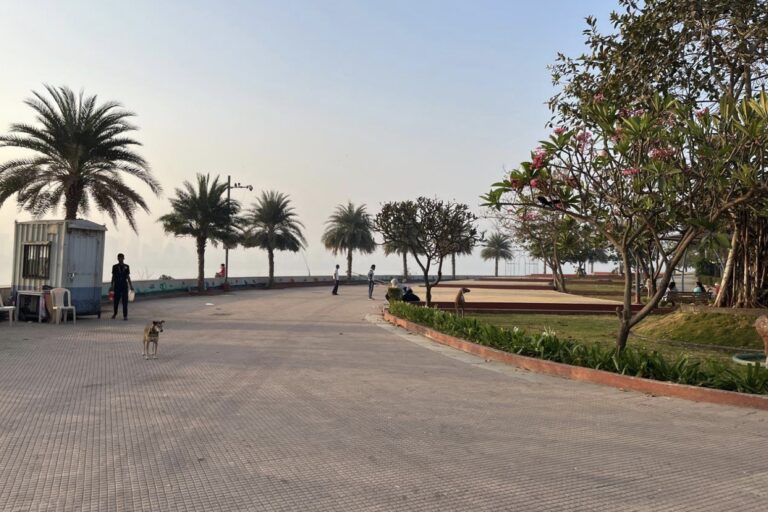
Nature as infrastructure
The design of the proposed coastal forest is carefully attuned to Mumbai’s coastal ecology. It recommends that the sea-facing edge host hardy species like casuarina, pandanus and the Indian tulip tree that are natural defenders against salt spray and winds while the mid-zones have understory plants like white orchid tree, sarpagandha and chameli to support pollinators, birds and small mammals. On the eastern side, adding shade trees such as neem and peepal will create comfortable microclimates, buffering surrounding residential areas from urban heat, the proposal suggests. This zonal planting strategy, claims the team behind MCF, follows principles set out in the Urban Greening Handbook and the Nagar Van Yojana, both of which emphasise native vegetation and long-term ecological benefits. The project also aligns closely with the Mumbai Climate Action Plan, the city’s official climate roadmap, which stresses the need for urban cooling and biodiversity. The case for the Mumbai Coastal Forest is backed not only by ethics but by science. Urban forests have already proven their value in cities like New York through the MillionTreesNYC campaign and in Beijing through the Greenbelt Program with the increased vegetation cover acting as air filters, heat shields and sponges.
Over 68,450 citizens have already signed an online petition, since February this year, calling on government authorities to develop the coastal forest. The idea of the forest has also gained widespread traction on social media. Perhaps what is most radical about the proposal is its insistence that public space be truly public. Mumbai’s maidans (open grounds) are beloved but imperfect. Their periphery-shaded design limits full-day use, and studies show they are often dominated by male users, underutilised by women, children, the elderly and the differently-abled. The native forest seeks to correct these inequities, creating multi-use clearings, inclusive trails and sensory experiences for everyone.
After receiving Expressions of Interest (EoIs) from five different firms, Reliance Industries has been selected by the coastal road department to develop the open space under a CSR initiative. In the coming months, the next step for the Mukesh Ambani-led company will be to submit a design and development plan alongside a timeline to the Brihanmumbai Municipal Corporation (BMC). While it remains to be seen if this truly aligns, there’s hope it will lead to the kind of ecological urbanism citizen groups envision.
For a metropolis that has spent centuries wrestling with the sea for growth, what if the next chapter of reclamation was not for roads or real estate, but for resilience? Not in defiance of nature, but in partnership with it.
Namrata Dewanjee writes about cities, buildings, objects, and is interested in what design reveals (and conceals) about gender, power, and the urban condition. She is trained as an architect. Manan Shah is a museologist, curator and writer. He is a recipient of the Kochi Biennale Curatorial Fellowship and has been part of India Art Fair’s Young Collectors Programme as an assistant curator.
Banner image: In the 2000s, the Bandra-Worli Sea Link was opened to the public. In the 2010s, a 29.2 kilometre long coastal road was conceptualised along the western side of Mumbai. Image by Wirestock/Envato.










